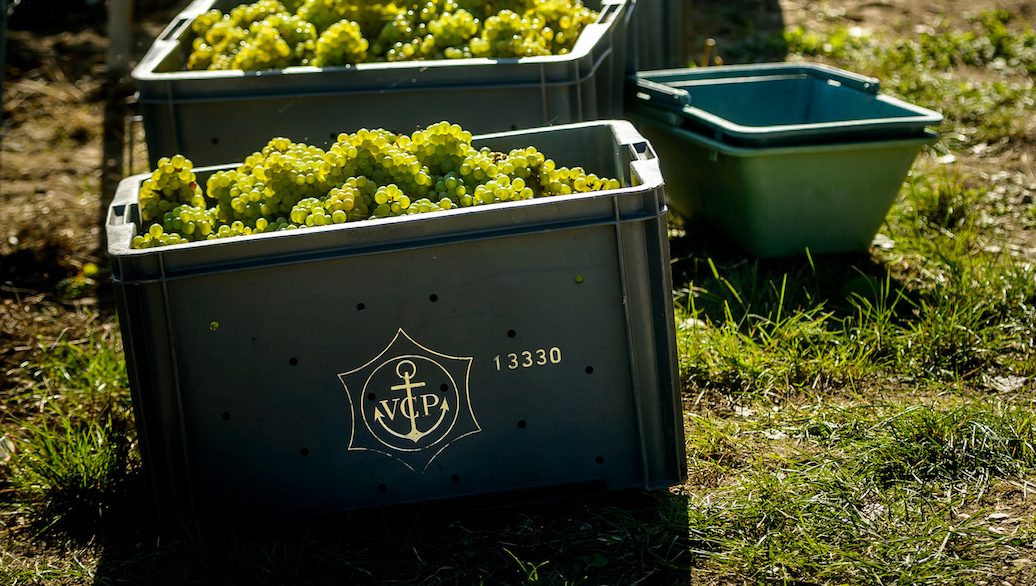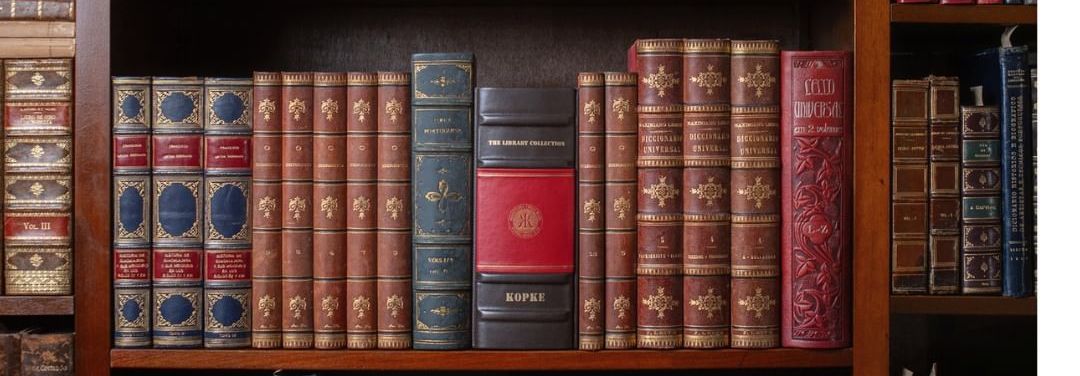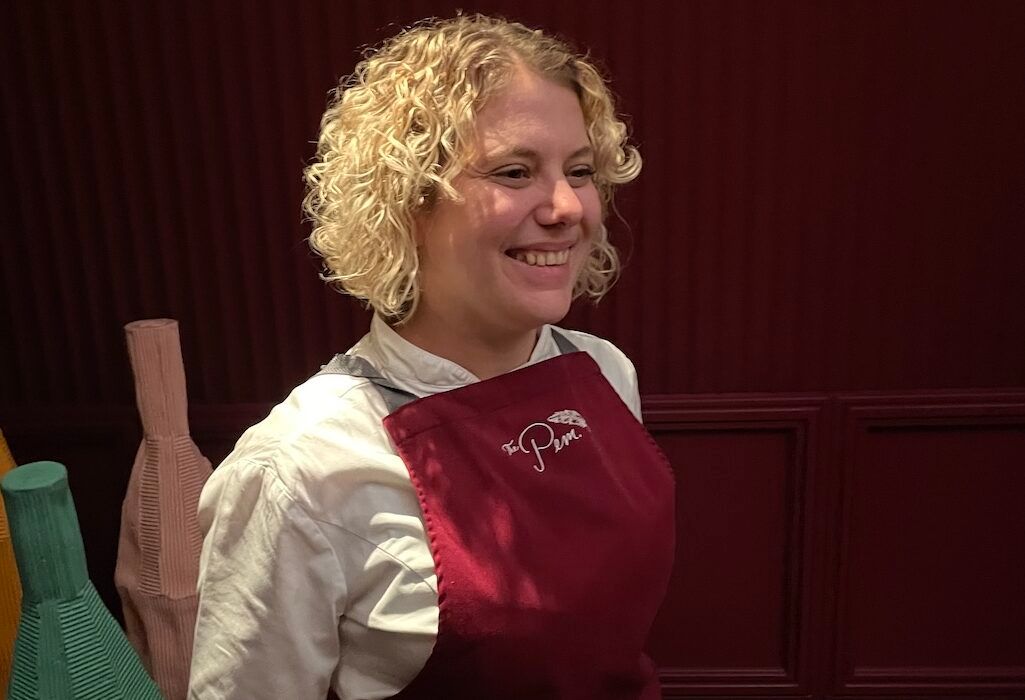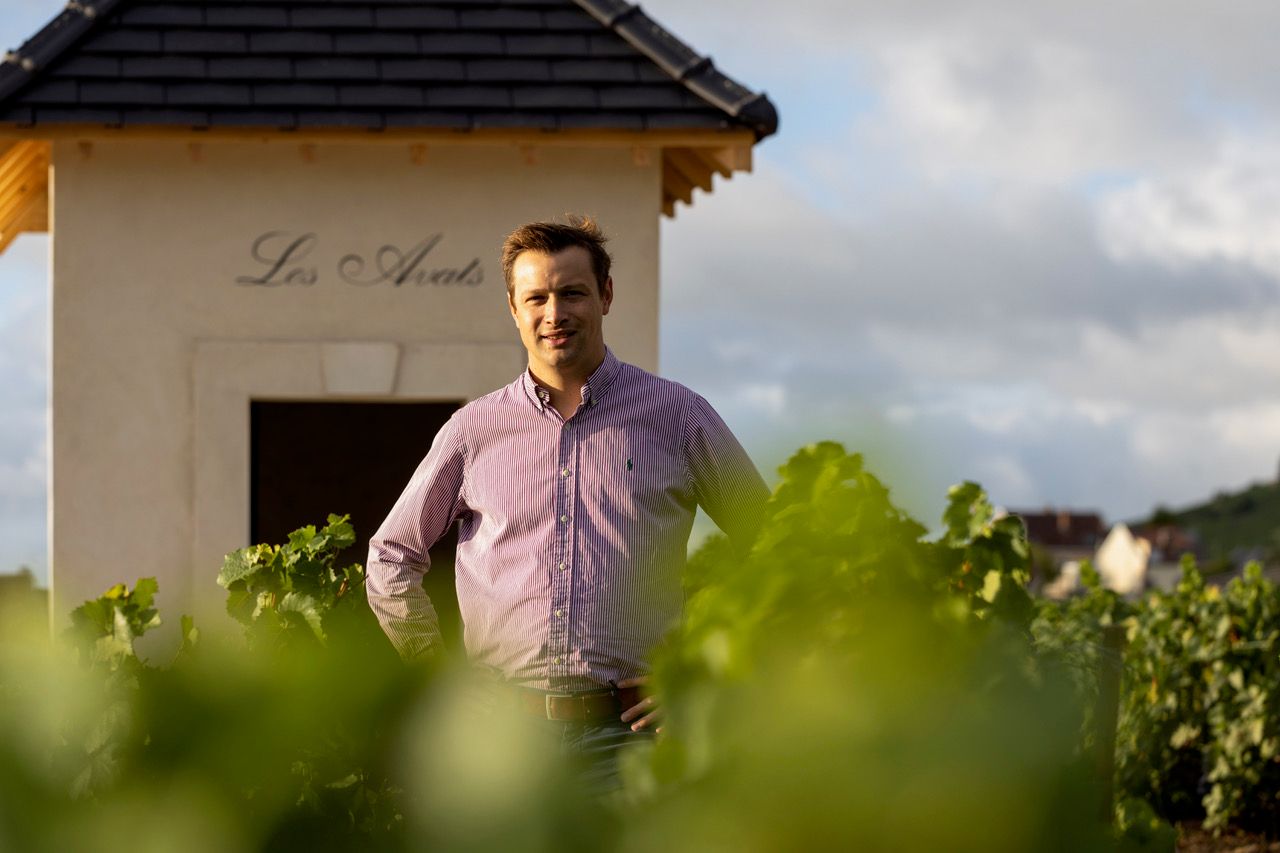In order to make the blend for the first release of Extra Brut Extra Old, Dominique Demarville chose from a ‘palette’ of 400 reserve wines, all kept on their lees in stainless steel tanks “vintage by vintage, variety by variety, plot by plot.”
A new idea
It’s not very often that you encounter something really different in Champagne: there are vintages and prestige cuvées, there are single vineyard and single-varietal wines, houses play with dosage levels and fermentation vessels…Yes, all these facets enrich Champagne but something really new?
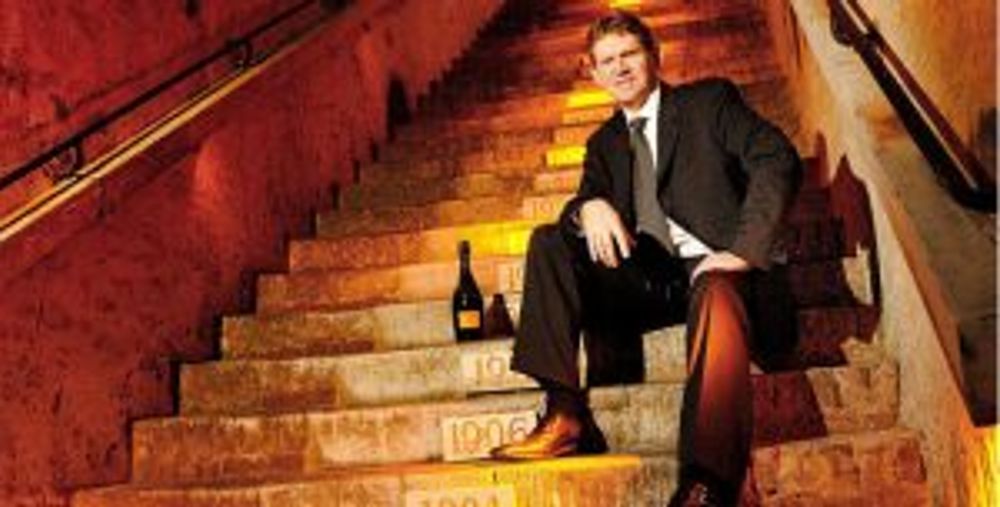
Dominique Demarville, chef de cave Veuve Clicquot
Dominique Demarville, chef de cave at Veuve Clicquot, pulled this off today as he introduced this “new member of the Veuve Clicquot family” at the headquarters of Moët-Hennessy in London: EBEO or Extra Brut Extra Old is a multi-vintage blend made purely from reserve wines spanning vintages from 2010-1988.
So let us look at the idea, the wine itself, the differences between EBEO and Yellow Label – the big idea from which this small, niche edition stems. Last but certainly not least we look at its base components.
Reserve wines – a primer
Champagne initially made a virtue out of necessity by blending numerous vintages of its northerly wines to create cuvées that were greater than the sum of their parts.
Later, NV blends became the key to maintaining the house styles that would both create and define a brand.
This is the model we know: non-vintage blends or multi-vintage blends, as many houses prefer to call them today, are usually based on base wines of the current vintage with a greater or lesser degree of reserve wines.
These are still base wines held back from previous vintages that add depth, character and complexity to a new base wine and allow the chefs de cave to re-create a consistent house style year after year, no matter how great the vintage variation.
That is a feat in itself.
Putting ideas on their head
Dominique Demarville and his team, however, took this idea and put it on its head: they created a Champagne solely based on reserve wines and Extra Brut Extra Old is the fascinating, delicious result.
“We started to work on this in 2011,” Demarville says. “The idea was to make a Veuve Clicquot style which we love, with a creamy texture in the extra-brut category. However, before it is extra brut, it is extra old, made from 100% of reserve wines.
For Demarville, EBEO is “extracted” from the house’s famous flagship NV blend Yellow Label. ”We want to show how important reserve wines are and share and enhance what is in the Yellow Label,” he said.

“Today at Veuve Clicquot we have more than 400 different reserve wines. The youngest are from 2016, the oldest from 1988. Between 2016 and 1988 we have 17 different years at our disposal. This diversity of flavours is very important,” said Demarville and explained that all the reserve wines are kept in stainless steel tanks: “vintage by vintage, variety by variety, plot by plot.”
The reserve wines are kept at a constant temperature of 13°C on their fine lees.
“The lees help these wines to age: they provide aromatic components as well as creaminess. Secondly, lees protect the wines from oxidation. This way we can keep the wines for a long time.”
Demarville confirmed that there is no stirring of lees at all: “The less we touch the reserves the better.”
As a special and fascinating insight into the blending process, Demarville treated us to a tasting of the aged reserve wines that make up EBEO – from 1988 to 2010. The blend was made and bottled in November 2013.
“At that time,” said Demarville, “the 2010 vintage was three years old. So we have had a minimum ageing of three years in vat and three years in bottle, that is a minimum age of six years.”
This first edition of EBEO was disgorged in June 2017 and is released now. What we have is thus a complex blend of vintages with immense freshness and finesse – defined by the interplay of vat-aged vintage wines rather than by prolonged lees ageing on bottle.
“We do not need longer time on lees in bottle because we took the opportunity of the lees in tank,” confirms Demarville. The complexity of the wines and their incredible creaminess even as base wines allowed Demarville to have an extra-brut dosage of just 3 g/l.
Veuve Clicquot Extra Brut Extra Old
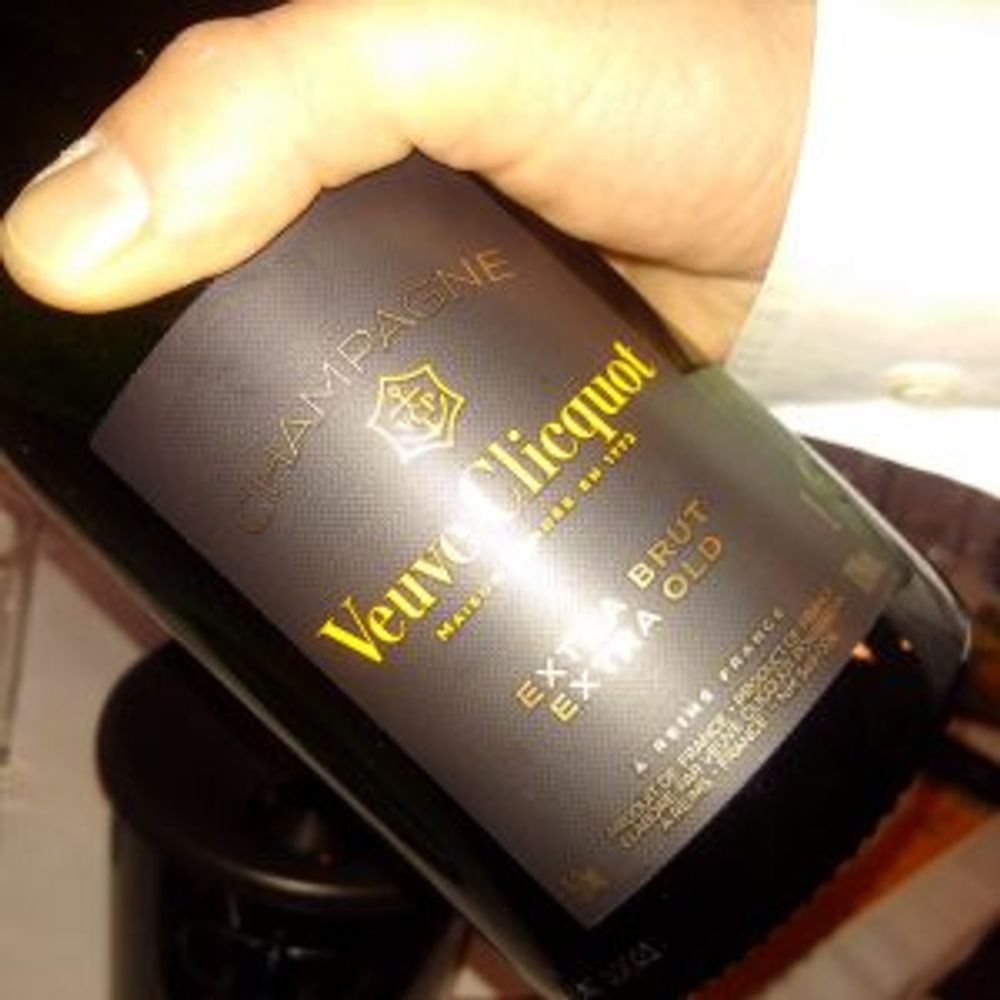
The wine has a golden hue and opens with aromas of cream and lemon meringue pie. The palate is exceptionally creamy [due to lower pressure of just 4.5 rather than the usual 6 bar]. The body is lithe and slender, far lighter than the power of the base wines would suggest. The wine is about depth rather than power and still tingles with fresh fruit and purity. There is a lightness of touch and layered elegance.
“One of my roles at Veuve Clicquot is to manage the diversity of reserve wines,” Demarville states. “This was done to explore a new territory for Veuve Clicquot Champagne. If you want power you choose a vintage of Veuve Clicquot, but here we want to explore the lightness, the delicacy of Champagne.”
Demarville said that a new iteration of EBEO has been created every year since 2013, so this is not a one-off experiment.
“I hope that EBEO will be a part of the Veuve Clicquot family for a long time. But it will always be a small quantity because I cannot endanger the precious collection of reserve wines.”
He says that EBEO represents less than 1% of production – any more than that and it would cannibalise Yellow Label.
EBEO vis-à-vis Yellow Label
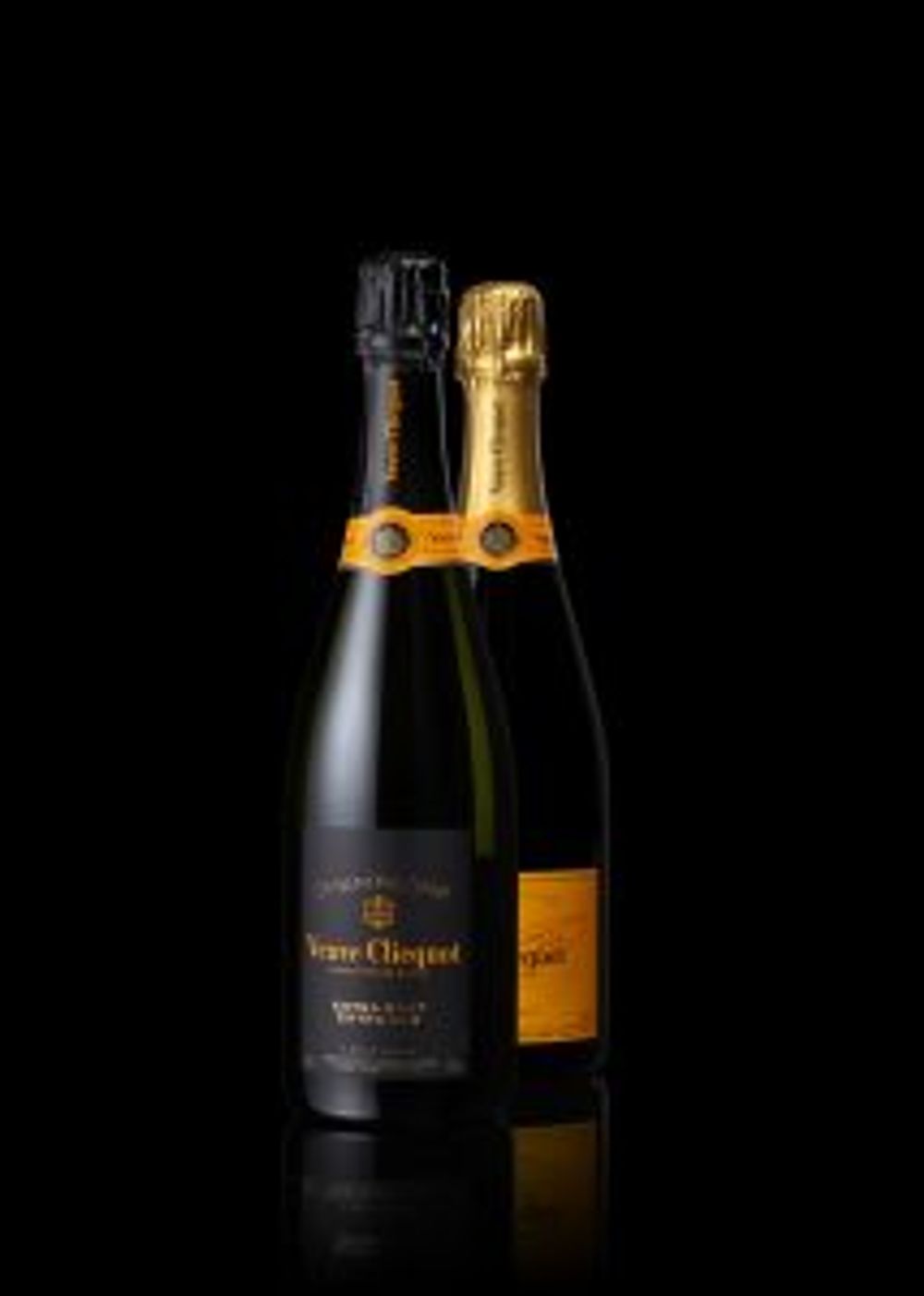
Demarville was keen to stress that he sees EBEO as an “extract” of Yellow Label or Carte Jaune and explained how unusually great the proportion of reserve wines is in the flagship blend is: for every successive bottling, 50-55% of Yellow Label are based on the current vintage, this is what brings fresh fruit and spring blossom notes.
30-35% are made up of reserve wines that are 1-3 years old, giving riper fruit and summer blossom notes. 5-10% are always based on 4-10 year old reserve wines which adds notes of honey, nuts and bread. Up to 3% are reserve wines of more than 10 years of age – these lend notes of truffle and even coffee.
The current Yellow Label release thus boasts 48% of reserve wines. Veuve Clicquot Yellow Label has an average dosage of 9g/l and Demarville stresses: “We only have one blend and one level of dosage for the entire world.” He also confesses that “Yellow Label is the most challenging but the most interesting blend to make. It’s always the first blend we make,” before considering anything else.
The base wines
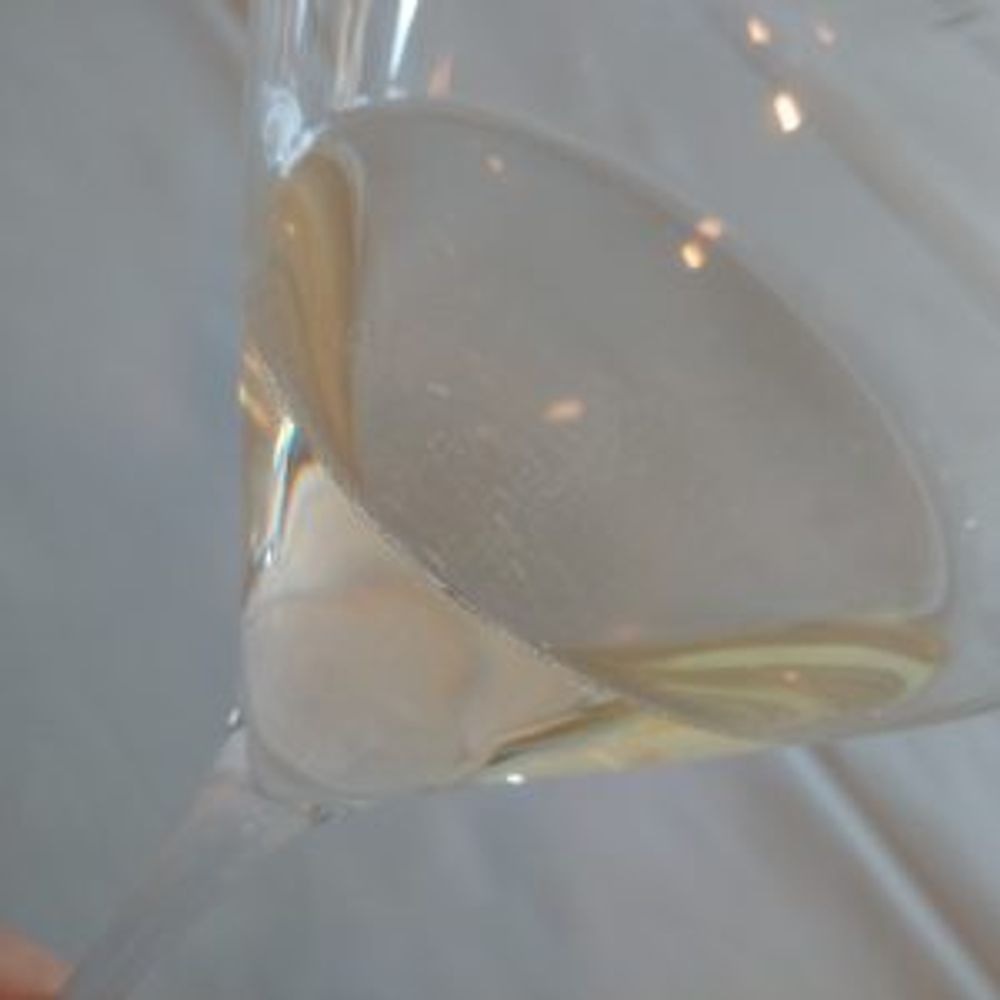
The six wines that constitute the current EBEO release were remarkable. Demarville confirmed that all completed malolactic fermentation and that there was no wood used at all.
2010 Pinot Meunier from Ville Dommange: still fresh and fruity with rapier-like acidity and a textured mid-palate. Demarville says “I love it for its precision.”
2009 Pinot Noir from Aÿ: absolute precision coupled with total solidity. Pure muscle but with precision and finesse. Demarville says: “I love its salinity and length.”
2008 Chardonnay from Villers Marmery: Still shows a whiff of flinty reduction. Full of stone, ozone and oyster shell notes. Arrow-like, linear acidity and total lemon brightness. Demarville says: “Length is the signature of exceptional years. I believe this base wine can age for 8-10 yeas more.”
2006 Pinot Noir from Verzy: With its nose of creamy apricots this marks a step change. This is rounded but ultra-clean, almost cleansing with a firm core of stone and chalk. Demarville says: “Creaminess is the keyword now.”
1996 Pinot Noir from Loche sur Ource: Full of fruit: no longer primary but baked Williams pear and dried lemon peel. Vanilla creeps onto the palate, leaving an utterly creamy texture. This is long and, despite its freshness, almost sultry. Demarville says: “Wow. For me this is a perfect example of what we can expect from a reserve wine after waiting for such a long time.”
1988 Chardonnay from Cramant: Rich vanilla and toasted coconut shards make for a heady and seductive mix. The palate is totally slender but mellowed into a kind of sublimated crème brulée expression with sparkling dashes of lemon oil. Utterly palatable, even as a base wine. Demarville says: “These last three wines, 2006, 1996 and 1988 are like spices. Even a small amount makes a big difference.” EBEO has just 1% of this heart-stopping 1988 Grand Cru.
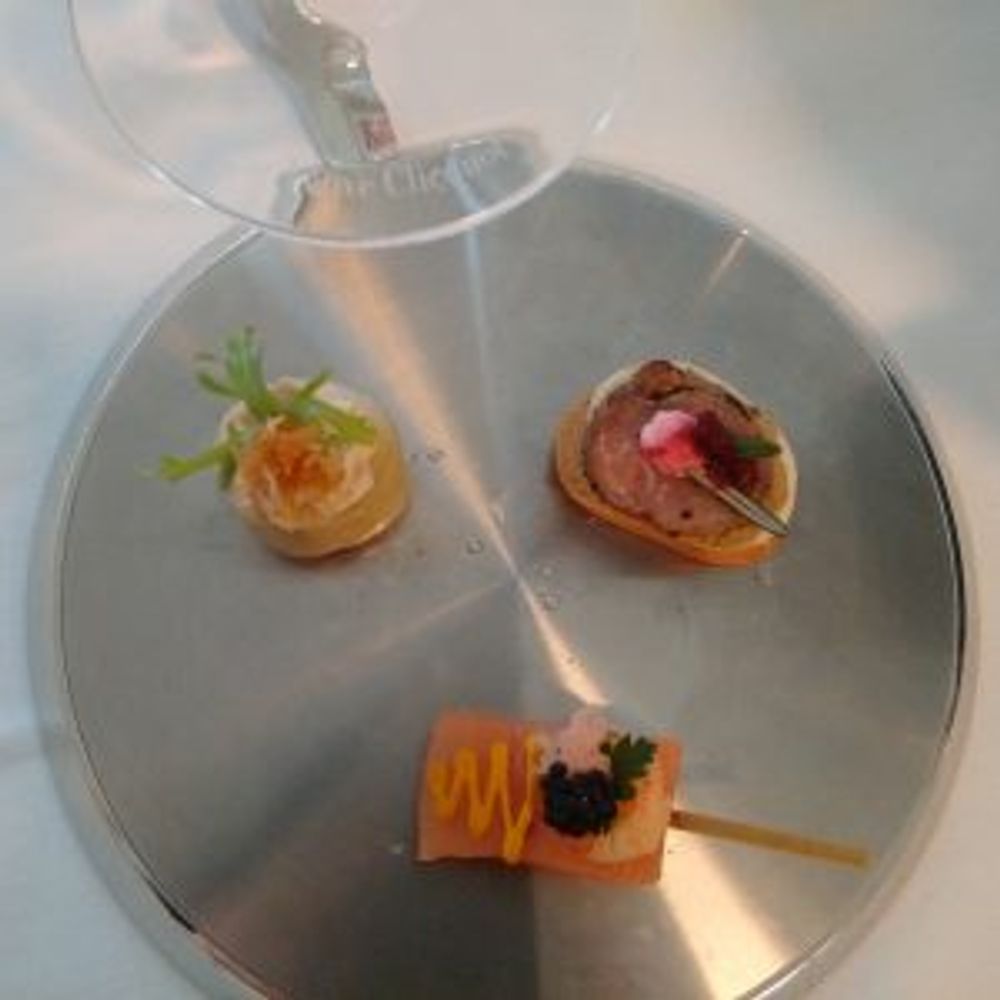
Food pairing at the London tasting
Having tasted these wines I expected a big, solid, rich Champagne – however, EBEO comes on light feet. It carries its riches like translucent veils and just dances on tongue and mind.
EBEO is available at Jeroboams at a RRP of £69. What a steal. It is also available in magnum.
